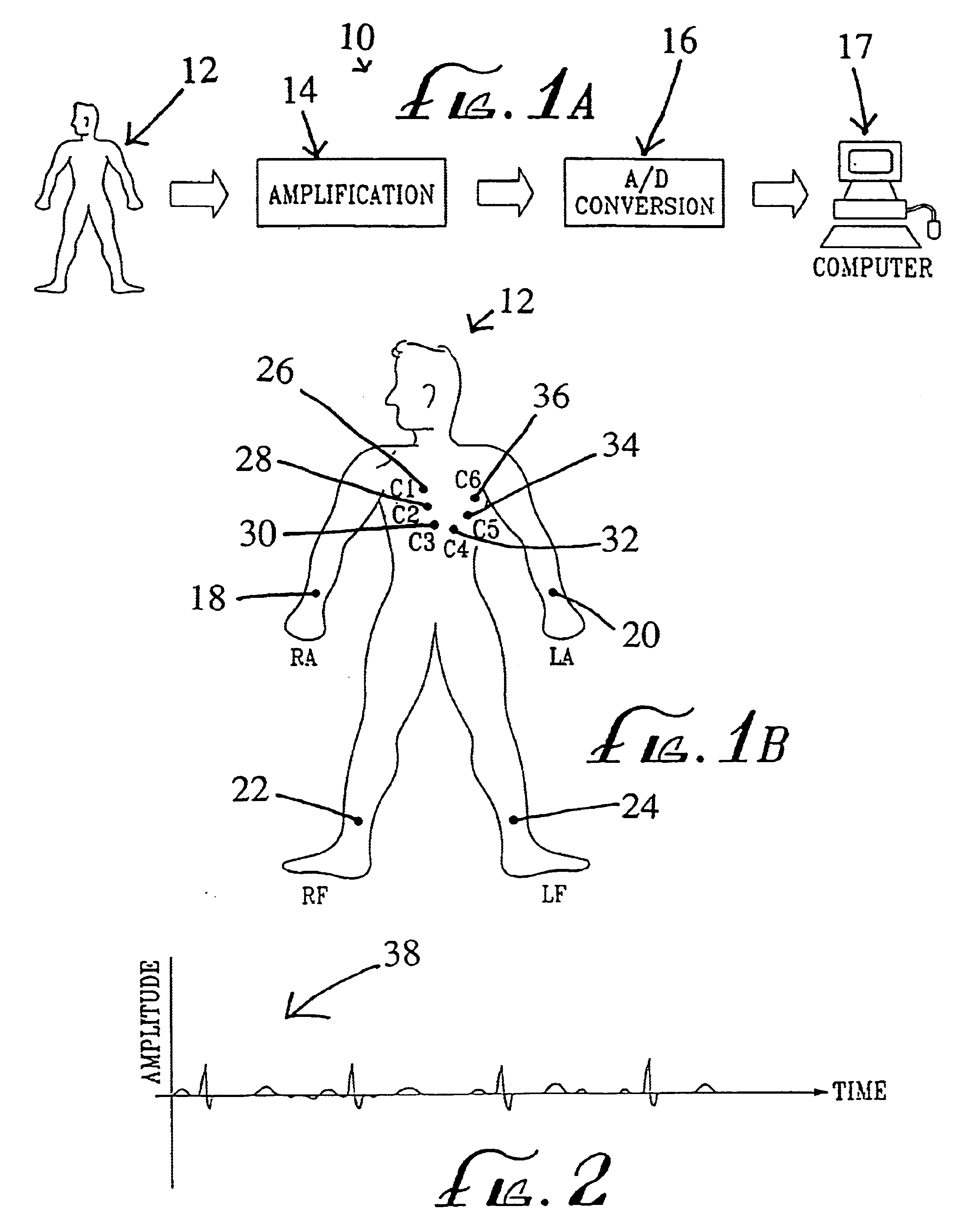System and method for detecting and locating heart disease
a heart disease and system technology, applied in the field of cardiac disease, can solve the problems of increased mortality rate, limited value of coronary artery disease diagnosis tests such as these, and disadvantages of second group of tests, which are expensive and/or invasiv
- Summary
- Abstract
- Description
- Claims
- Application Information
AI Technical Summary
Problems solved by technology
Method used
Image
Examples
Embodiment Construction
According to one embodiment of the present invention, a method for detecting and locating heart disease is disclosed comprising the steps of obtaining electrocardiograph (EKG) signals from a patient, modifying the EKG signals, and establishing a base value for use in evaluating modified EKG signals. The step of obtaining includes the steps of providing an electrocardiograph, providing a plurality of connectors between a plurality of locations on the patient and the electrocardiograph, and operating the electrocardiograph to take readings from the plurality of locations and to output the EKG signals. Note that the plurality of locations include positions proximate the patient's Right Arm (RA), Left Arm (LA), Right Foot (RF), Left Foot (LF), and six separate areas on the patient's Chest (C1-C6).
The step of modifying includes the steps of mathematically modifying the EKG signals to obtain altered signals in the time domain, and converting the altered signals in the time domain into pow...
PUM
 Login to View More
Login to View More Abstract
Description
Claims
Application Information
 Login to View More
Login to View More - R&D
- Intellectual Property
- Life Sciences
- Materials
- Tech Scout
- Unparalleled Data Quality
- Higher Quality Content
- 60% Fewer Hallucinations
Browse by: Latest US Patents, China's latest patents, Technical Efficacy Thesaurus, Application Domain, Technology Topic, Popular Technical Reports.
© 2025 PatSnap. All rights reserved.Legal|Privacy policy|Modern Slavery Act Transparency Statement|Sitemap|About US| Contact US: help@patsnap.com



